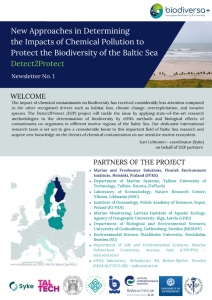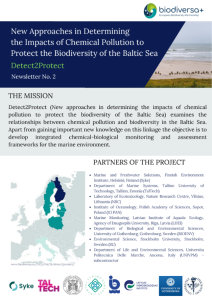DETECT2PROTECT
Duration: 2023-01-01 to 2025-12-31
Person in charge: Kari Lehtonen, Finnish Environment Institute (kari.lehtonen@syke.fi)
Other persons: Raisa Turja, Rami El Dairi, Ossi Tonteri (Syke); Natalja Kolesova, Ivan Kuprijanov (TalTech); Ieva Barda, Evita Strode (LIAE); Elena Gorokhova, Brita Sundelin, Ann-Kristin Eriksson, Justyna Hampel (SU); Joachim Sturve (GU); Owen Rowe, Markus Raudkivi, Gastón Alurralde (HELCOM); Milda Stankevičiūtė, Tomas Makaras (GAMTC); Ksenia Pazdro, Lech Kotwicki (IO PAN)
Financiers: European Biodiversity Partnership (Biodiversa+), Research Council of Lithuania
Partners: Tallinn University of Technology (TalTech, Estonia), Polytechnic University of the Marches (UNIVPM, Italy), Agency of Daugavpils University/Latvian Institute of Aquatic Ecology (LIAE, Latvia), University of Stockholm (SU, Sweden), University of Gothenburg (GU, Sweden), SeAnalytics AB (Sweden), Nature Research Centre (GAMTC, Lithuania), Institute of Oceanology Polish Academy of Sciences (IO PAN, Poland)
Websites:
Context
Chemical pollution represents one of the main threats to the Baltic Sea marine environment, negatively affecting the health of its biota and vital ecological functions, and endangering its biodiversity. To achieve good environmental status, regulatory efforts, such as the EU Water and Marine Strategy Framework Directives, rely on ecological and chemical assessments. However, the essential link between the chemical assessment, based on the concentrations of contaminants, and ecological assessment, based on the status of communities, is the assessment of the biological effects of contaminants, and this is currently largely missing from the frameworks. Moreover, the chemical assessment alone is insufficient for protecting wild populations since it considers only selected and few substances, thus neglecting numerous other potentially harmful chemicals as well as the hazards related to contaminant mixtures. Increasing evidence shows that effect-based methods such as biomarkers and bioassays can provide a powerful tool to discriminate chemical toxicity from other possible causes of biodiversity decline and serve as an early warning of the potential threats.
Main objectives
The Detect2Protect project examines the relationships between chemical contamination and loss of biodiversity and provides tools for risk assessment in different parts of the Baltic Sea marine environment. The key objective is to facilitate the implementation of novel approaches for integrated chemical-biological monitoring and assessment frameworks.
The project aims at
- improved understanding of cause-effect relationships between environmental pollution and changes in biodiversity and ecological status,
- methodological advances in biological effect assessments to prevent adverse effects on biodiversity, including a diagnostic toolbox and predictive models to classify the contamination status, and data integration methodologies,
- developing effect-based methods based on early warning monitoring strategies with links to the health and biodiversity of marine ecosystems, and
- strengthened interactions at regional and European level in the field of impact assessment of marine pollution by dissemination of knowledge.
Main activities
Existing monitoring and research data on chemical contaminants, biological effects and biodiversity will be collated from selected areas of the Baltic Sea to produce predictive modelling tools. New data will be collected from pilot field sites in coastal areas of Poland, Latvia, Lithuania, Estonia, Sweden and Finland, comparing polluted and reference sites. DNA metabarcoding will be applied for assessing biodiversity and examined against data on chemical and biological effects.
At the policy level, Detect2Protect aims especially at facilitating the implementation of novel monitoring and assessment methodologies, with outputs directly related to the goals of the Helsinki Commission and the implementation of its Baltic Sea Action Plan 2021, by developing guidance materials and an assessment tool, made available also for other Regional Sea Commissions. Key findings will be conveyed to researchers, stakeholders and the general public via the project webpage, periodical e-newsletters, an international workshop for key stakeholders, and a Policy Brief. Smaller national workshops elaborating the project outcomes with a more local perspective will also be organised.
Project updates
This section presents the most recent news and updates regarding the Detect2Protect project, emphasizing significant research advancements, key milestones, and important findings.
Our Team Events
Save The Baltic Sea: research, education and solutions for sustainable future
On 6 December 2024, the final event of the hiking expedition around the Baltic Sea, “Save The Baltic Sea,” took place at Litexpo, bringing together researchers, the public, and journalists to celebrate and raise awareness about the health of the Baltic Sea. The event showcased cutting-edge research and offered interactive excursions organized by the dedicated scientists from the NRC Laboratory of Ecotoxicology.
We were pleased to present the Detect2Protect project (No S-BIODIVERSA-23-1), funded by the Research Council of Lithuania under the Biodiversa+ programme and co-funded by the European Commission, which focuses on detecting and mitigating pollutants to protect biodiversity in the Baltic Sea.
🔗 View on Gamtostyrimai.lt
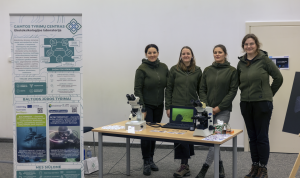
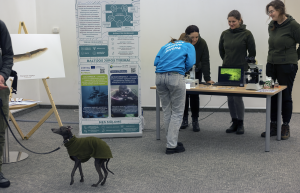
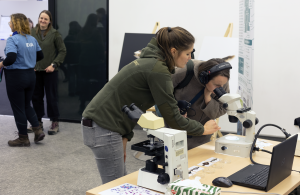
“Savos Bangos: Sustainable Future Makers’ Laboratory” Festival
On June 21st, 2025, at Danė Square in Klaipėda, the Savos Bangos: Sustainable Future Makers’ Laboratory festival brought together researchers, locals, and visitors to promote sustainability and protect the Baltic Sea. Our Ecotoxicology Laboratory team was proud to present the Detect2Protect project (No S-BIODIVERSA-23-1), funded by the Lithuanian Research Council under the Biodiversa+ programme and co-funded by the European Commission.
During the festival, we presented our laboratory’s work and ongoing research, including fish blood tests and age determination through scales and otoliths, fish tagging and monitoring of migration routes, as well as an interactive game that invited visitors to find safe zones for Baltic Sea animals.
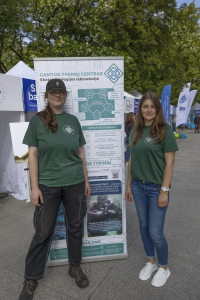
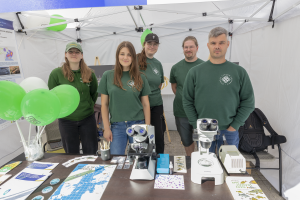
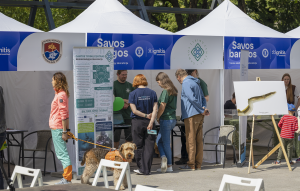
🔗 Read More
Newsletters
Here you can find newsletters about ongoing research and results from the Detect2Protect project—feel free to explore and stay informed.
